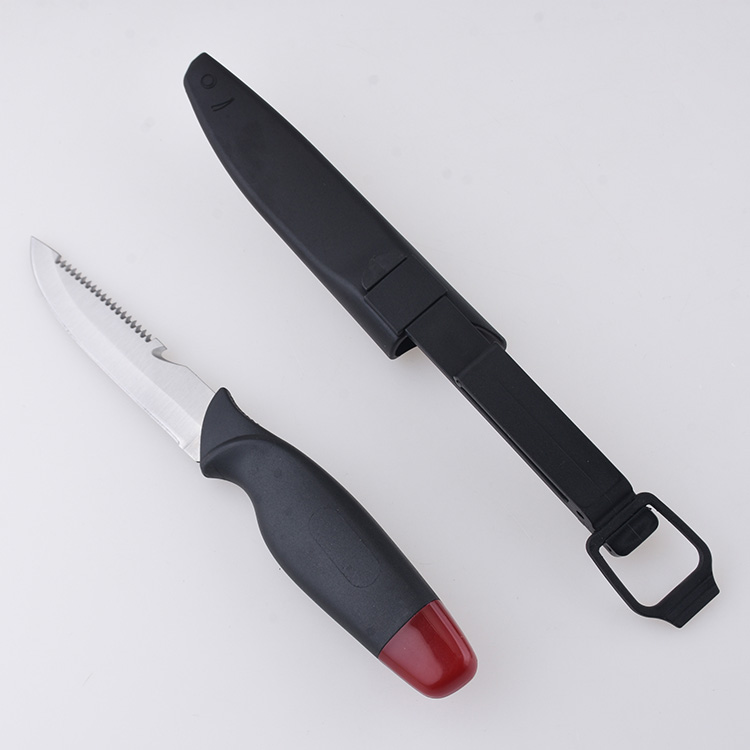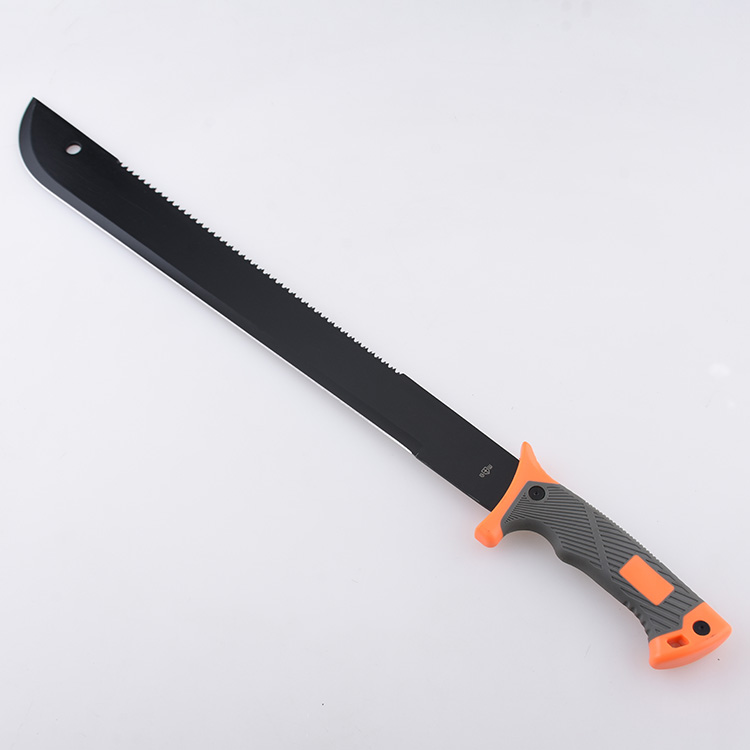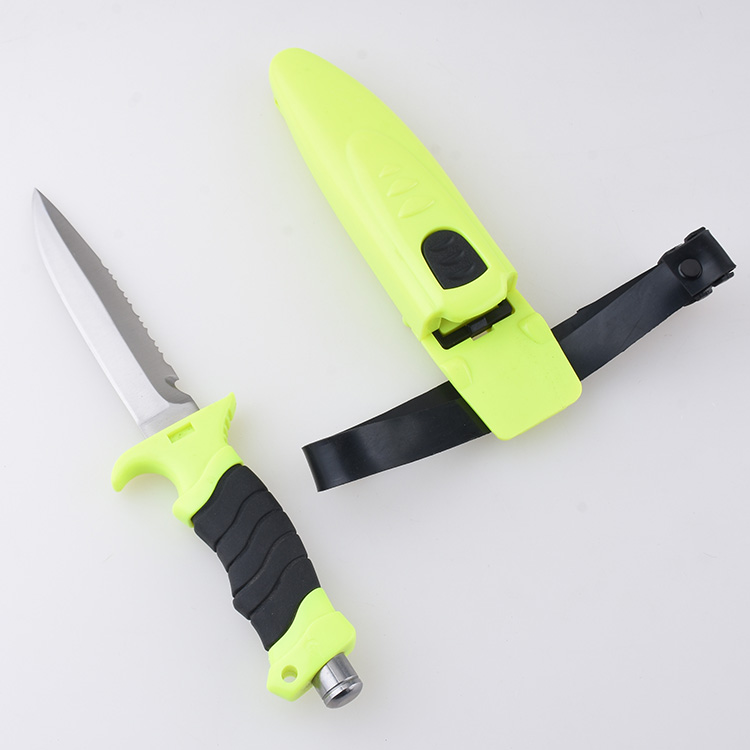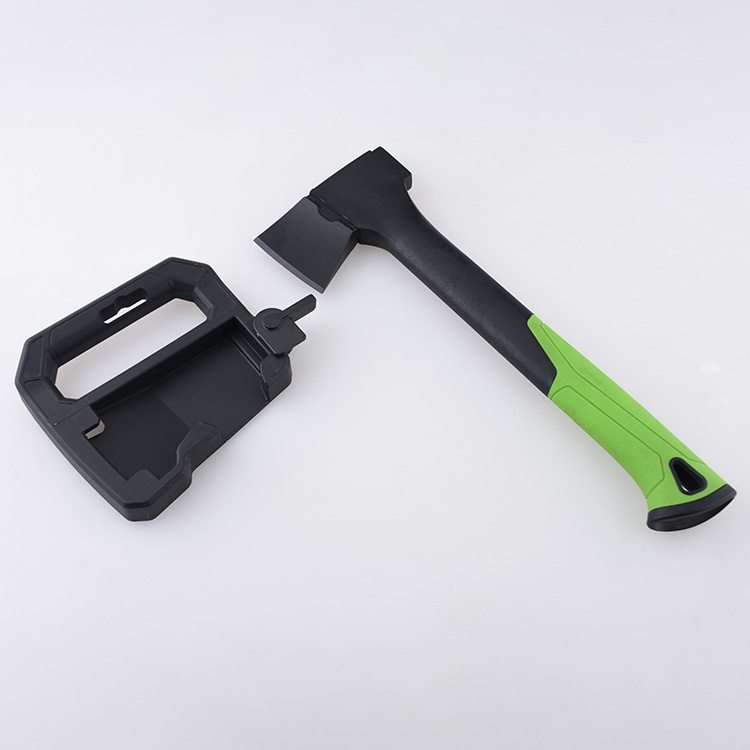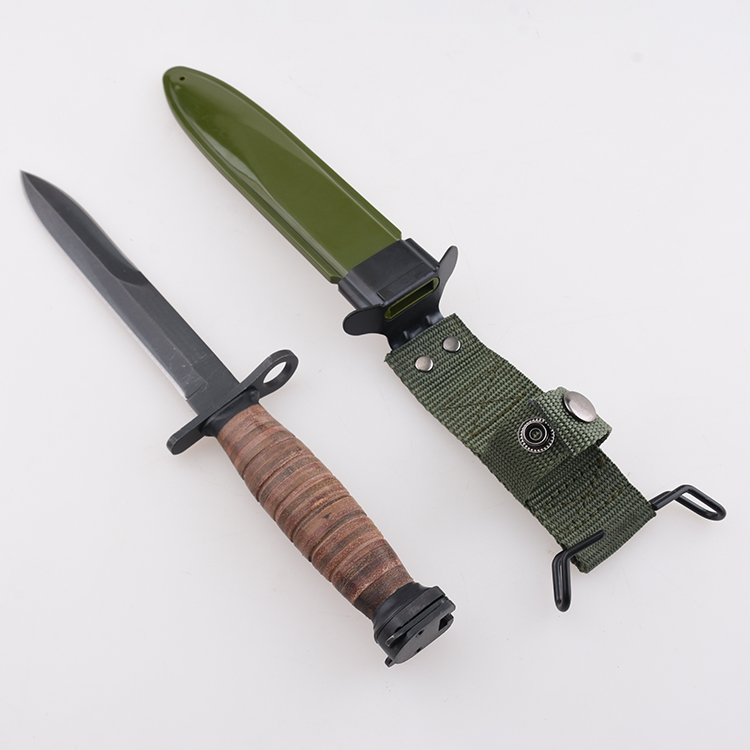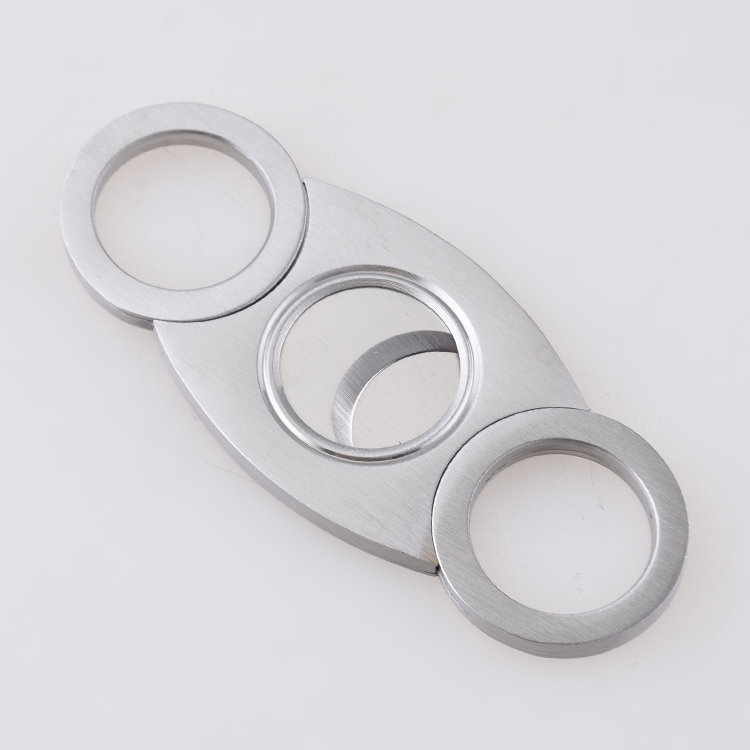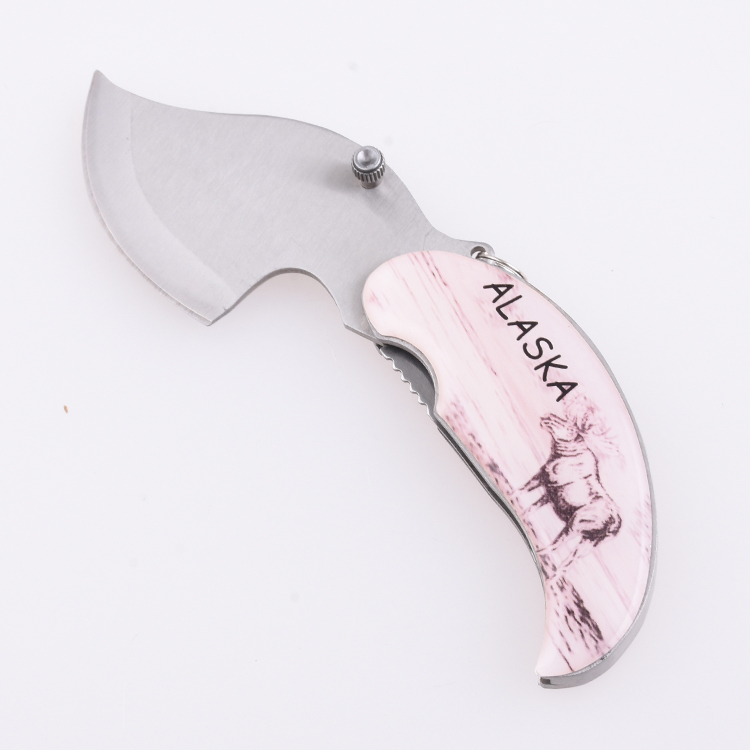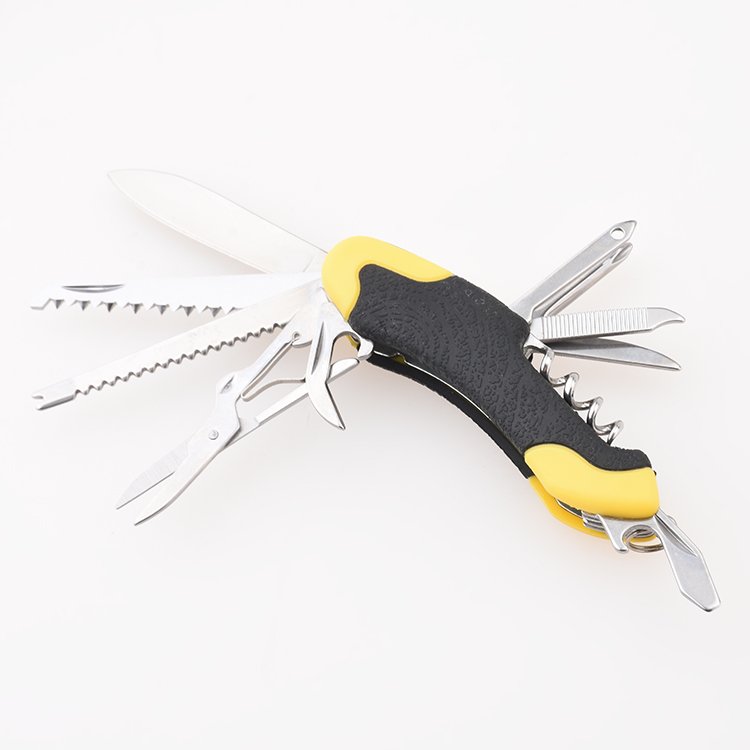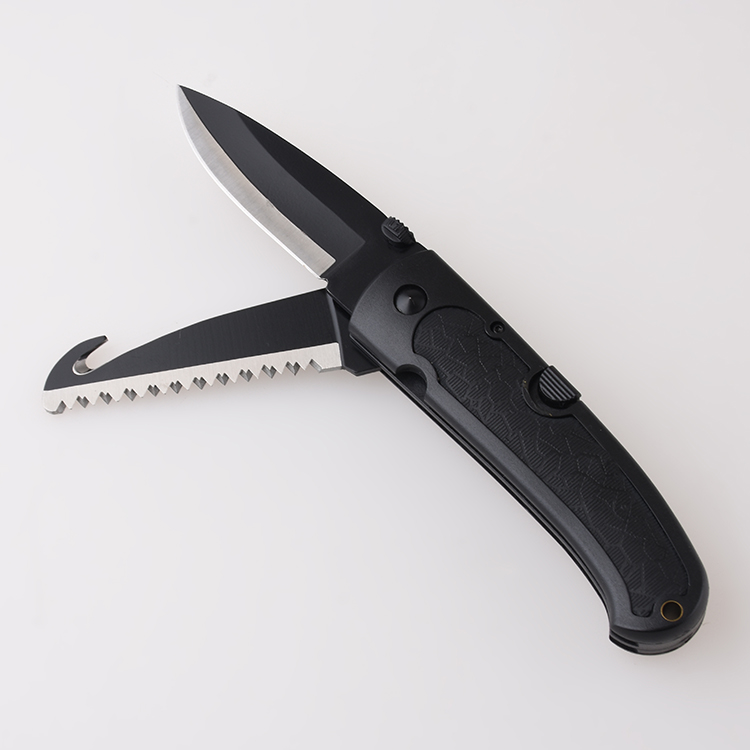3Cr13 steel is a type of stainless steel commonly used to produce folding knives. Known for its good balance between hardness and corrosion resistance, this steel is often chosen for budget-friendly knives.
However, while it is affordable and easy to sharpen, some knife enthusiasts question its durability and edge retention compared to higher-end steels.
This brings up an important question: Is 3Cr13 steel the right choice for high-quality folding knives? Let’s explore its properties and determine its suitability.
The Basics of 3Cr13 Steel
Chemical Composition and Physical Properties
3Cr13 steel is primarily composed of iron, chromium, and carbon.
It typically contains 0.35-0.45% carbon, which gives it some hardness and strength, and 12-14% chromium, providing a decent level of corrosion resistance.
Other elements like manganese, silicon, and phosphorus are also present in smaller quantities to enhance various properties. This combination ensures that 3Cr13 steel offers a balance between hardness and corrosion resistance, making it suitable for knife production.
Advantages and Limitations in Folding Knife Production
- Affordability: 3Cr13 steel is cost-effective, making it ideal for budget-friendly knives.
- Ease of Sharpening: Quick and simple to sharpen, suitable for both novices and experienced users.
- Corrosion Resistance: Provides decent corrosion resistance, adequate for most everyday uses.
- Limited Edge Retention: Loses its sharp edge relatively quickly, requiring frequent sharpening.
- Durability Concerns: Adequate for general tasks but may not endure heavy-duty applications as well as higher-end steels.
Everyday Carry Knife – 3Cr13 Steel
A practical example of a knife made from 3Cr13 steel would be an everyday carry (EDC) knife. These knives are used for a variety of tasks, such as opening packages, cutting rope, or performing small repairs.
An EDC knife made from 3Cr13 steel is affordable, easy to maintain, and offers adequate performance for daily tasks.
However, if used for more demanding applications, users might find themselves needing to sharpen it more frequently.
Performance Testing of 3Cr13 Steel
Hardness and Sharpness Test
Testing the hardness and sharpness of 3Cr13 steel helps determine how well it performs during cutting tasks.
One common method is the Rockwell hardness test, which measures the steel’s resistance to indentation.
For 3Cr13 steel, this typically falls within the range of 52-55 HRC, indicating moderate hardness. For example, users might find the blade sharp enough for slicing through vegetables or cutting through rope with ease, but it may require frequent resharpening for prolonged use.
Durability of the Folding Mechanism
The durability of the folding mechanism is crucial for assessing the longevity of a folding knife made from 3Cr13 steel.
Tests often involve repeatedly opening and closing the knife to see how the locking mechanism holds up.
In practical terms, a 3Cr13 steel knife might perform well in everyday scenarios, like opening packages or trimming garden plants, but could show wear and tear more quickly if subjected to heavy-duty tasks, like prying or cutting through tougher materials.
Corrosion Resistance and Maintenance Requirements
To gauge the corrosion resistance of 3Cr13 steel, tests are conducted by exposing the blade to humid environments or submerging it in saltwater for extended periods.
The chromium content in the steel aids in resisting rust, making it suitable for ordinary conditions. For instance, a 3Cr13 knife would handle a day of fishing without significant corrosion but might show some rust spots if not properly dried and maintained afterward.
Regular cleaning and oiling are recommended to keep the blade in good condition.
Cost-Effectiveness of 3Cr13 Steel
Impact on Pricing of Folding Knives
3Cr13 steel is known for its affordability, which makes it a popular choice for budget-friendly folding knives.
The low cost of the raw material means that manufacturers can produce knives at a lower price without compromising functionality for basic tasks.
This makes 3Cr13 steel knives a cost-effective option for consumers looking for a reliable knife without spending too much money.
In essence, the use of 3Cr13 steel helps keep the retail prices of these knives more accessible to a larger audience.
3Cr13 Steel Comparison with Similar Steels
S30V vs. 3Cr13 Steel Comparison
When comparing S30V and 3Cr13 steel, the primary difference lies in their performance and price. S30V is a high-end steel known for its exceptional edge retention and toughness.
This makes it ideal for demanding tasks such as hunting, outdoor survival, and professional kitchen use, where the blade needs to stay sharp for a long time and withstand rigorous cutting.
On the other hand, S30V’s advanced properties come at a higher cost, making knives made from this steel significantly more expensive.
In contrast, 3Cr13 steel is more affordable and easier to sharpen, making it suitable for everyday tasks like opening packages, cutting ropes, and light food preparation.
Although it lacks longevity in edge retention, its ease of maintenance makes it a practical choice for budget-conscious users.
154CM vs. 3Cr13 Steel Comparison
154CM steel is another high-quality option that stands out for its excellent edge retention and corrosion resistance.
This steel is often used in high-stress environments such as tactical and military applications, as well as in high-end kitchen knives.
154CM holds a sharp edge longer than 3Cr13 and is more resistant to wear and tear, making it a good choice for users who require a durable and reliable blade for extended use.
However, like S30V, 154CM comes with a higher price tag. In real-life applications, users who need a reliable, long-lasting knife might prefer 154CM, while those needing an economically priced blade that will perform well for every day, less intense tasks will find 3Cr13 steel to be more practical.
AUS-8 vs. 3Cr13 Steel Comparison
AUS-8 is a mid-range steel known for its balance of toughness, ease of sharpening, and moderate edge retention.
This makes it a popular choice for general-purpose knives, including folding knives and fixed blades used for camping and outdoor activities. It sits between S30V and 3Cr13 in terms of quality and price.
AUS-8 offers better performance than 3Cr13, holding an edge longer and being more durable, but it is still easier to sharpen than high-end steels like S30V. This makes it a versatile option for users who need a reliable knife without the premium cost.
In comparison, 3Cr13 remains the more budget-friendly option, ideal for users who prioritize cost efficiency and easy maintenance over long-term durability.
8Cr13MoV vs. 3Cr13 Steel Comparison
8Cr13MoV is another budget-friendly steel, closely related to 3Cr13 in terms of cost and general characteristics, but with some performance improvements.
8Cr13MoV offers slightly better edge retention and hardness, making it more suitable for users who need a bit more longevity in their cutting tools.
This steel is commonly used in affordable, everyday carry (EDC) knives and offers good all-around performance for its cost.
In practical terms, while 3Cr13 might be sufficient for simple tasks, 8Cr13MoV provides a small upgrade for users looking for a bit more durability without a significant price increase.
The choice between these two will depend on the user’s specific needs and budget constraints.
User Feedback and Market Acceptance of 3Cr13 Steel
User evaluations of folding knives made from 3Cr13 steel are generally mixed, reflecting the steel’s balance between cost and performance.
Many users appreciate the affordability of these knives, noting that they are ideal for everyday tasks such as opening packages, cutting rope, or performing light food preparation.
These reviews often highlight how easy the blades are to sharpen, which is a significant advantage for users who do not have advanced sharpening skills or access to professional sharpening services.
However, there are also common criticisms regarding the steel’s edge retention and durability, especially when subjected to heavy or prolonged use.
Users have reported that while 3Cr13 steel knives do the job for routine tasks, they tend to lose their edge more quickly compared to knives made from higher-end steels like S30V or 154CM.
Market acceptance of 3Cr13 steel folding knives reveals a trend of broad usage among budget-conscious consumers and brands focusing on cost-effective tools.
Popular applications include basic everyday carry (EDC) knives, utility knives, and even some kitchen knives aimed at entry-level markets.
These knives are often found in settings such as household tool kits, camping gear, and fishing tackle boxes where functional utility at a low cost is a priority.
While they may not appeal to professionals or enthusiasts who demand superior performance, 3Cr13 steel knives have carved out a niche among users who value practical, low-cost solutions for their cutting needs.
This widespread acceptance underscores the importance of offering varied steel options to cater to different market segments and user preferences.
Expert Perspectives of 3CrSteel
Experts generally view 3Cr13 steel as a practical choice for budget-friendly folding knives, emphasizing that it offers a reasonable balance of cost, strength, and performance. Though it does not match the high-end characteristics of premium steels like S30V or 154CM, 3Cr13 is applauded for its affordability and ease of maintenance.
According to experts, its moderate hardness makes it simple to sharpen, which is beneficial for users who do not have professional sharpening tools.
Moreover, while it may not offer the best edge retention or durability under heavy use, 3Cr13 steel is well-suited for everyday tasks and general utility purposes.
This combination of features makes it a popular option for entry-level knives and cost-effective solutions, providing satisfactory performance without breaking the bank.
Buying Advice for 3Cr13 Steel
Performance and Usability
When considering 3Cr13 steel for a folding knife, understanding its performance is key. This steel performs well for everyday tasks such as opening boxes, cutting string, and light food preparation.
It holds an edge sufficiently for routine use and is easy to sharpen, making it ideal for users who prefer low-maintenance tools.
However, for more demanding tasks that require greater edge retention and durability, higher-end steels might be a better choice.
Cost Effectiveness
One of the main advantages of 3Cr13 steel is its affordability. Knives made from this steel are generally less expensive, making them accessible to a wider range of consumers.
This makes 3Cr13 an excellent option for those on a budget or those who do not need a knife for heavy-duty purposes.
The cost-effectiveness of 3Cr13 steel also allows users to own multiple knives for different uses without a significant financial investment.
Target Audience
3Cr13 steel knives are best suited for casual users and beginners. They are ideal for individuals looking for a reliable knife for light to moderate tasks.
Outdoor enthusiasts, such as campers and hikers who do not require premium performance, will also find 3Cr13 knives practical.
Additionally, these knives are a good starting point for young users or those new to knife ownership, thanks to their ease of use and maintenance.
Practical Applications
For practical purposes, 3Cr13 steel folding knives fit well into everyday carry (EDC) scenarios. They are useful in household settings, for basic outdoor activities, and as part of utility toolkits.
These knives provide satisfactory performance for general cutting tasks, making them a versatile and functional choice for various needs without incurring high costs.
Market Availability
3Cr13 steel knives are widely available in the market, offered by many brands focusing on cost-effective solutions.
They are found in big-box retail stores, online marketplaces, and specialty knife shops.
This wide availability ensures that consumers have numerous options to choose from, catering to different preferences and styles while maintaining affordability.
Conclusion
In summary, 3Cr13 steel offers a balance between cost-effectiveness and usability, making it a viable option for everyday cutting tasks. Its affordability and ease of maintenance are clear pros, allowing users to own functional knives without a large financial investment.
When choosing a folding knife, personal preferences, and specific use scenarios are key. Understanding one’s requirements and expected usage can guide the choice between 3Cr13 steel and higher-end alternatives, ensuring the best match for each user’s needs.
For those looking to customize knives with 3Cr13 steel, Shieldon offers OEM services to bring your knife design to life.
Shieldon is committed to delivering cost-effective, reliable knife solutions tailored to various market segments and user preferences. Shieldon has been in the industry for years, providing OEM services for a wide range of steel options, including 3Cr13.
Get in touch with Shieldon today to bring your knife design to reality. With Shieldon’s expertise and experience, you can trust the quality and performance of your customized knives with 3Cr13 steel.
FAQ
What are the chemical components of 3Cr13 steel?
3Cr13 steel is composed mainly of iron, with additional elements to enhance its properties. The key components include approximately 13% chromium, which provides corrosion resistance, and 0.3% carbon, which boosts hardness. It also contains small amounts of manganese, silicon, and nickel to improve strength and durability.
What are the advantages of using 3Cr13 steel in folding knife production?
The advantages of using 3Cr13 steel in folding knife production include:
- Affordability: 3Cr13 steel is cost-effective, making it accessible for budget-conscious buyers.
- Ease of Maintenance: The steel is easy to sharpen and maintain, which is ideal for users who don’t have advanced sharpening tools.
- Corrosion Resistance: With 13% chromium content, 3Cr13 steel offers good resistance to rust and corrosion.
- Sufficient Performance: Suitable for everyday tasks, this steel provides satisfactory edge retention and cutting ability for general use.
- Wide Availability: Knives made from 3Cr13 steel are widely available, offering various options to consumers.
These features make 3Cr13 steel a practical choice for producing reliable and cost-effective folding knives.
What is the hardness and sharpness of 3Cr13 steel?
3Cr13 steel typically has a hardness rating of around 54 to 56 on the Rockwell Hardness Scale (HRC). This hardness level means it can resist wear and maintain a good edge for everyday tasks. Additionally, 3Cr13 steel is relatively easy to sharpen, allowing users to maintain a sharp cutting edge with minimal effort.
What is the cost-effectiveness of 3Cr13 steel?
3Cr13 steel is considered highly cost-effective due to its low production cost. Knives made from this steel are generally priced between $10 to $30, making them affordable for most consumers.
This price range allows users to purchase reliable, everyday knives without a significant financial investment.
Its affordability, combined with adequate performance for common tasks, makes 3Cr13 steel a practical choice for budget-conscious buyers.
What kind of maintenance is required for a 3Cr13 steel folding knife?
Maintaining a 3Cr13 steel folding knife is simple.
First, keep the knife clean. After each use, wash it with warm water and mild soap, then dry it thoroughly to prevent rust.
Second, regularly oil the pivot and blade areas to ensure smooth operation and prevent corrosion.
Third, sharpen the blade as needed using a sharpening stone or sharpening tool to maintain a keen edge.
Finally, store the knife in a dry place when not in use to avoid moisture exposure. With these basic steps, your 3Cr13 steel folding knife will remain in good condition and perform well for everyday tasks.

